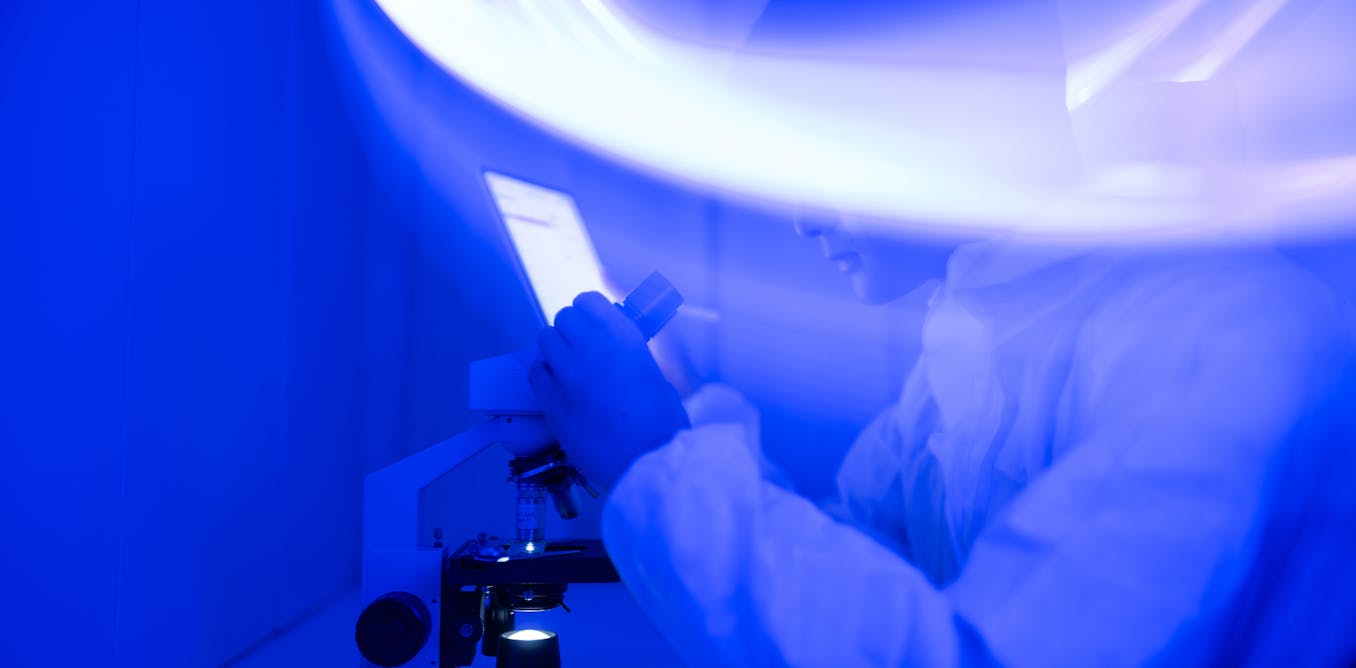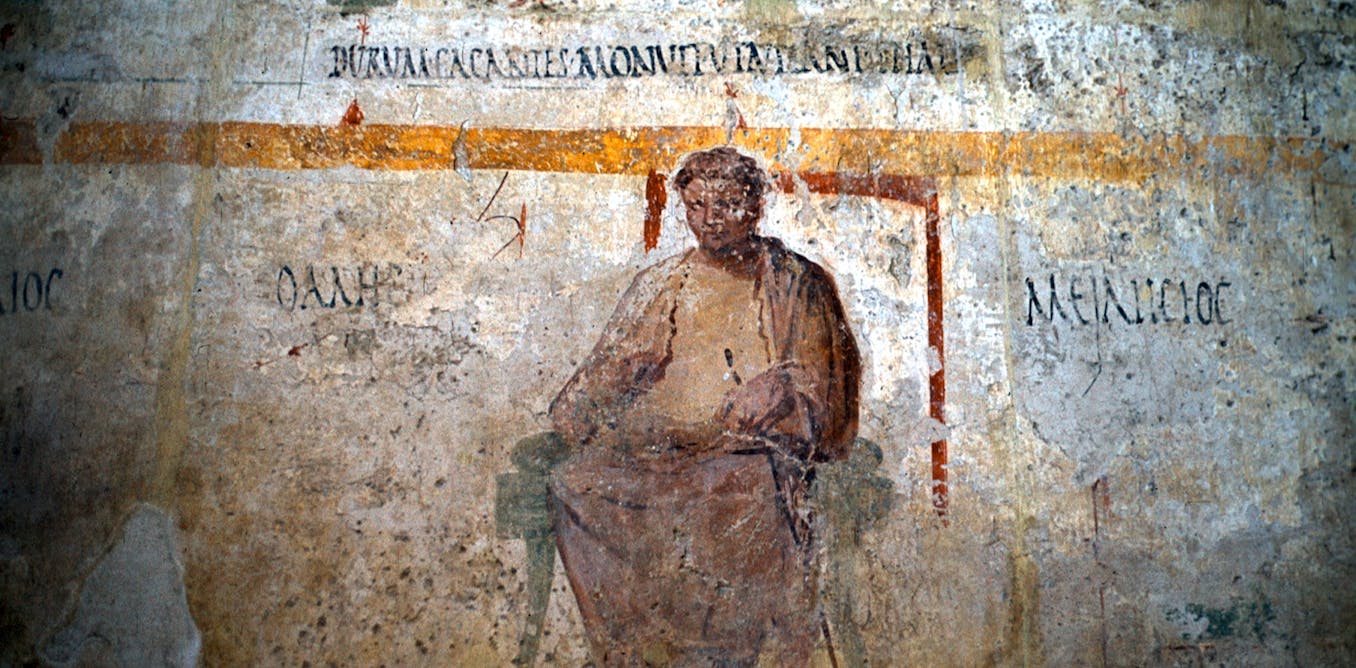In recent decades, we’ve learnt huge amounts about the universe and its history. The rapidly developing technology of telescopes – both on Earth and in space – has been a key part of this process, and those that are due to start operating over the next two decades should push the boundaries of our understanding of cosmology much further.
All observatories have a list of science objectives before they switch on, but it is their unexpected discoveries that can have the biggest impact. Many surprise advances in cosmology were driven by new technology, and the next telescopes have powerful capabilities.
Still, there are gaps, such as a lack of upcoming space telescopes for ultraviolet and visible light astronomy. Politics and national interests have slowed scientific progress. Financial belts are tightening at even the most famous observatories.
This is article is part of our series Cosmology in crisis? which uncovers the greatest problems facing cosmologists today – and discusses the implications of solving them.
The biggest new telescopes are being built in the mountains of Chile. The Extremely Large Telescope (ELT) will house a mirror the size of four tennis courts, under a huge dome in the Atacama desert.
Reflecting telescopes like ELT work by using a primary mirror to collect light from the night sky, then reflecting it off other mirrors to a camera. Larger mirrors collect more light and see fainter objects.
Another ground-based telescope under construction in Chile is the Vera C. Rubin telescope. Rubin’s camera is the largest ever built: the size of a small car and weighing about three tonnes. Its 3,200 megapixels will photograph the whole sky every three days to spot moving objects. Over the course of 10 years, these photographs will be combined to form a massive time-lapse video of the universe.
Astronomy used to be a physically demanding job, requiring travel to remote telescopes in dark sites –- but many astronomers began working from home long before COVID. In the late 20th century, major ground observatories started to put in place technology to allow astronomers to control telescopes for observations at night, even when they were not there in person. Remote observing is now commonplace, carried out via the internet.
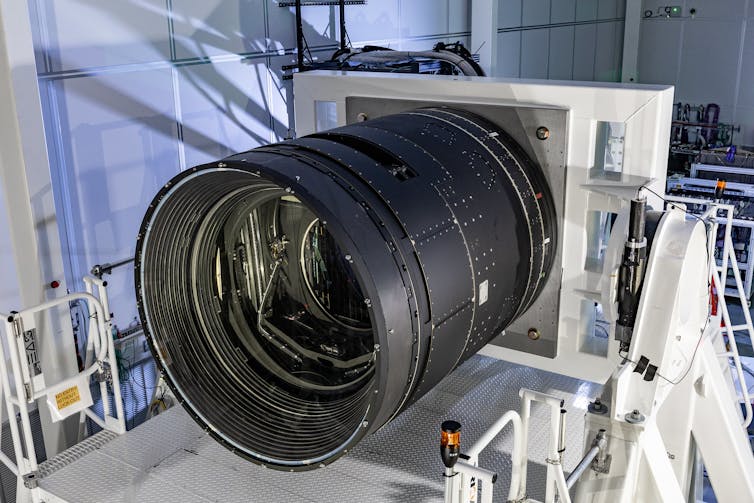
Jacqueline Ramseyer Orrell/SLAC National Accelerator Laboratory, Author provided (no reuse)
Expect the unexpected
The view of any telescope on the ground is limited, though, even if it’s on top of a mountain. Launching telescopes into space can get around these limitations.
The Hubble Space Telescope’s operational history began when the space shuttle lifted it above the atmosphere on April 25 1990. Hubble got the full 1960s sci-fi treatment: a rocket to launch it, gyroscopes to point it, and electronic cameras instead of photographic film. But one plan fell through: for Hubble to host a commuting astronaut-astronomer, working decidedly away from home.
Hubble was designed to take a census of the Milky Way and its neighbouring galaxies. Its successor, the James Webb Space Telescope, would study even more distant galaxies.
Both telescopes have revolutionised our understanding of the universe, but in ways nobody foresaw. Hubble’s original plans mention none of the discoveries now seen as its greatest hits: plumes of water erupting from Jupiter’s moon Europa, the vortex around black holes, invisible dark matter that holds the universe together, and the dark energy that is pulling it apart.
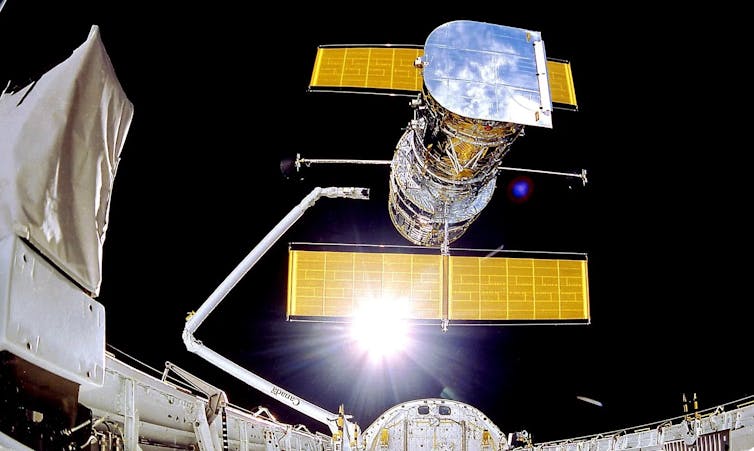
Nasa/Smithsonian Institution/Lockheed Corporation
Webb, launched on December 25 2021, now spends a third of its time looking at planets around other stars that weren’t even known about when it was designed.
The stated goal of an expensive telescope is usually just a sales pitch to space agencies, governments and (shhh…) taxpayers. The Webb telescope should achieve its original science goals, but astronomers have always known that seeing further, finer or in more colours can achieve so much more. The unexpected discoveries by telescopes are often more significant than the science objectives stated at the outset.
Taking the long view
For scientists, it’s a relief that telescopes go beyond their brief, because Hubble and Webb both took more than 25 years from napkin to launch. In that time, new scientific questions arise.
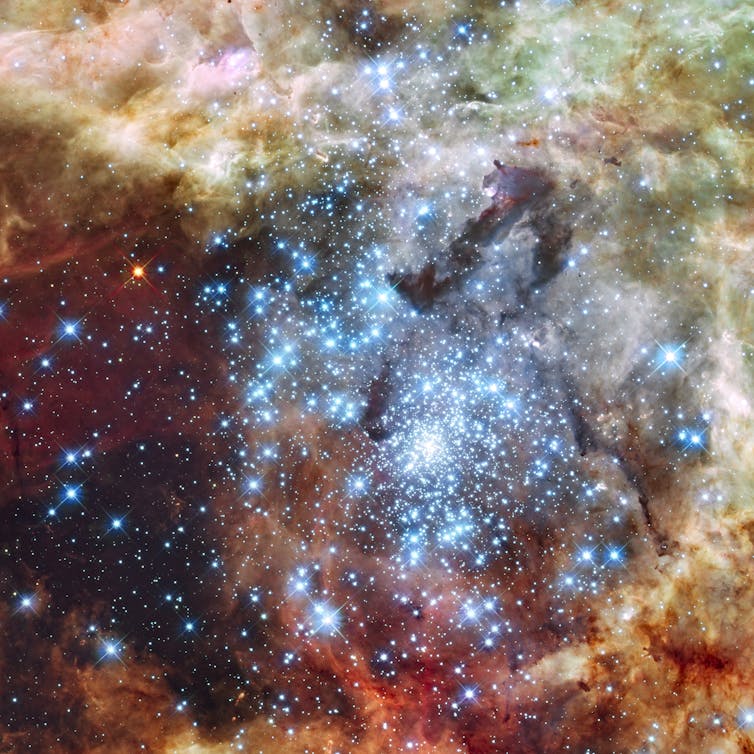
Nasa, Esa, Elena Sabbi (Esa, STScI), Author provided (no reuse)
Building a large space telescope typically takes about two decades. The Chandra and XMM-Newton space telescopes took 23 years and 15 years to build, respectively. They were designed to observe X-rays coming from hot gas around black holes and galaxy clusters, and were launched very close together in 1999.
They were followed by Japan’s Hitomi X-ray satellite, which took 18 years to build, and the German eRosita instrument on Russia’s Spektr-RG space observatory, which took 20 years.
Similar timescales apply to the European Space Agency’s Hipparcos and Gaia space telescopes, which have mapped all the stars in the Milky Way. The Cobe and Planck missions to study the microwave-light afterglow of the Big Bang also took two decades. Precise dates depend how you count, and a few exceptions have been “faster, better, cheaper”, but national space agencies are generally risk averse and slow when developing these projects.
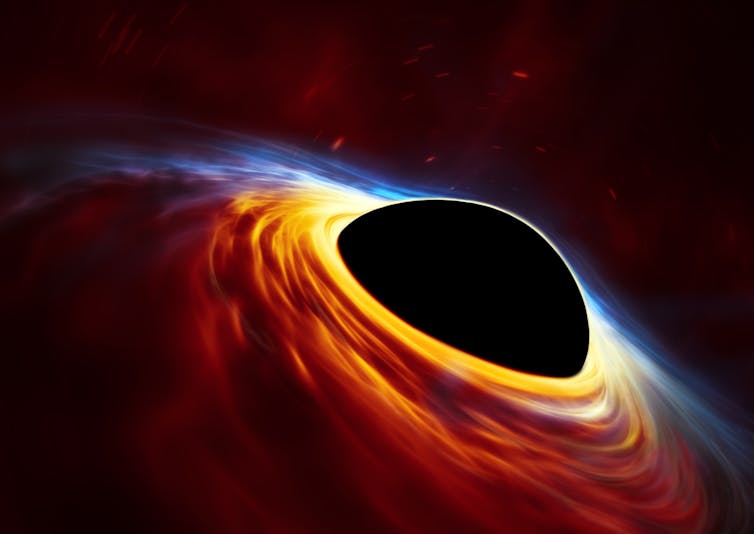
ESO, Esa/Hubble, M. Kornmesser, CC BY
The latest space telescopes are therefore millennials. They were designed at a time when astronomers had measured the universe’s newborn expansion following the Big Bang, and also its old-age, accelerating expansion. Their main goal now is to fill the gap –- because, surprisingly, interpolations from early times to late times don’t meet in the middle.
The measured rates for the expansion of the universe are inconsistent, as are results for the clumpiness of matter in the cosmos. Both measurements create challenges for our theories of how the universe evolved.
Observing the middle age of the universe requires telescopes operating at long wavelengths, because light from distant galaxies is stretched by the time it reaches us. So, Webb has infrared zoom cameras, while the European Space Agency’s Euclid space telescope, launched in 2023, and Nasa’s Nancy Grace Roman telescope, which is set to launch in 2026, both have infrared wide-angle views.
Three buses come along at once
Most stars shine in ultraviolet and infrared colours that are blocked by the Earth’s atmosphere, as well as the colours our eyes evolved to see.
Extra colours are useful. For example, we can weigh stars on the other side of our galaxy because massive stars are bright in infrared, while smaller ones are faint – and they stay that way throughout their lifetimes. However, we know where stars are being born because only young stars emit ultraviolet light.
In addition, independent measurements of the same thing are vital for rigorous science. Infrared telescopes, for example, can work together and have already made surprising discoveries. But it’s not great for diversity that the Webb, Euclid and Roman space telescopes all see infrared colours.
Hubble’s visible light camera has just been switched off due to budget cuts. Nasa will not swing back to ultraviolet wavelengths until the 2030s, with the Ultraviolet Explorer and Habitable Worlds Observatory.
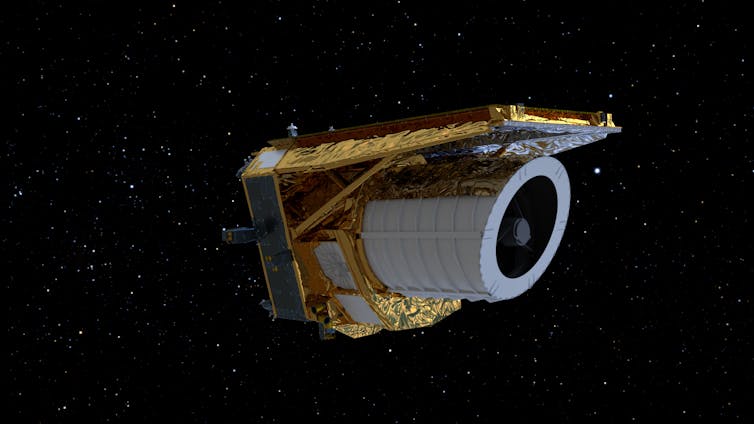
Esa, CC BY-SA 3.0.
Earthly politics gets in the way, too. Data from China’s Hubble-class space telescope, Xuntian, is unlikely to be shared internationally. And in protest at Russia’s invasion of Ukraine, in February 2022 Germany switched off its eRosita X-ray instrument that had been operating perfectly, in collaboration with Russia, a million miles from Earth.
Cheap commercial launches may save the day. Euclid was to have lifted off on a Russian Soyuz rocket from a European Space Agency spaceport in French Guiana. When Russia ended operations there in tit-for-tat reprisals, Euclid’s launch was successfully switched at the last minute to a SpaceX Falcon 9 rocket.
If large telescopes can also be folded inside shoebox-size “cubesat” satellites, the lower cost would make it viable for them to fail. Tolerating risk creates a virtuous circle that makes missions even cheaper.
Telescopes are also being tried in innovative locations such as giant helium balloons and aeroplanes. One day, they might also be deployed on the Moon, where the environment is advantageous for certain types of astronomy.

Rubin Observatory/NSF/AURA/A. Pizarro D
But perhaps the most unusual telescope technology, which may bring the most unexpected discoveries, is gravitational wave detectors. Gravitational waves are not part of the electromagnetic spectrum, so we can’t see them. They are distortions, or “ripples”, in spacetime caused by some of the most violent and energetic processes in the universe. These might include a collision between two neutron stars (dense objects formed when massive stars run out of fuel), or a neutron star merging with a black hole.
If telescopes are our eyes, gravitational wave detectors are our ears. But again, current gravitational wave detectors on Earth are mere dry runs for the ones astronomers will ultimately deploy in space.
Asked what the next generation of observatories will discover, I have no idea. And that’s a good thing. The best science experiments shouldn’t just tell us about the things we expect to find, but also about the unknown unknowns.
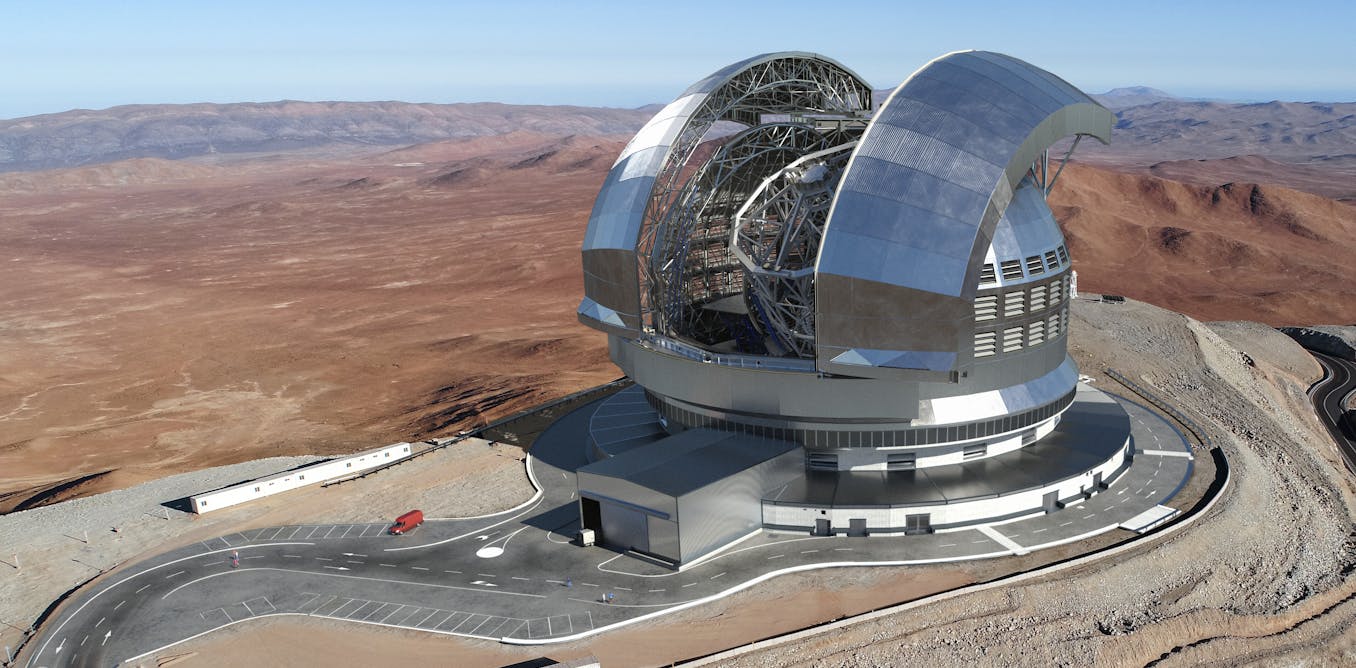
The post “A new generation of telescopes will probe the ‘unknown unknowns’ that could transform our knowledge of the universe” by Richard Massey, Professor of extragalactic astrophysics (dark matter and cosmology), Durham University was published on 10/17/2024 by theconversation.com


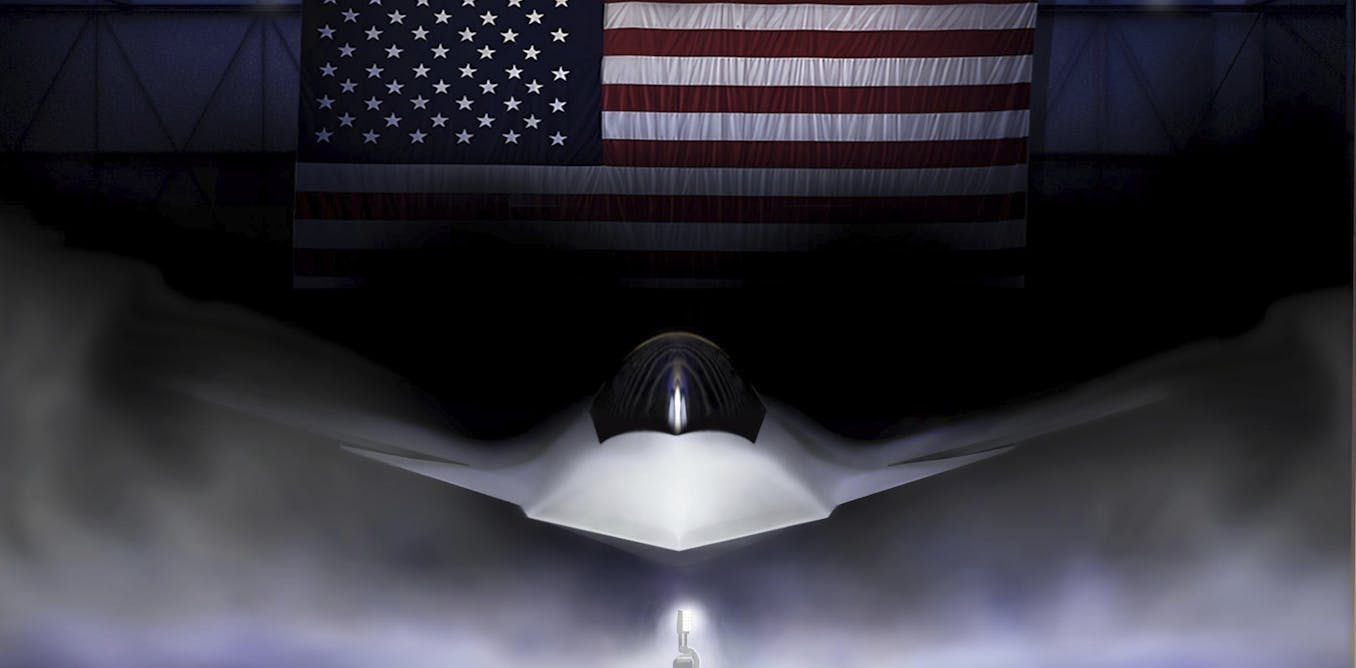



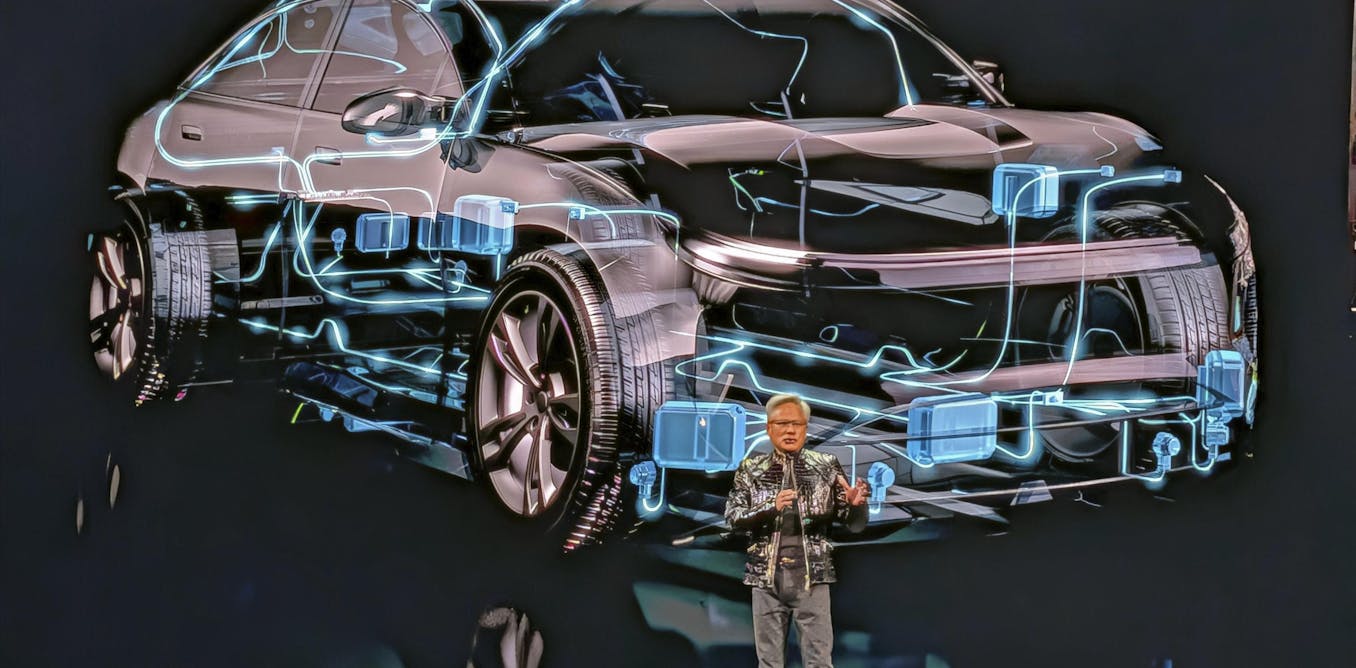







-2.png)



